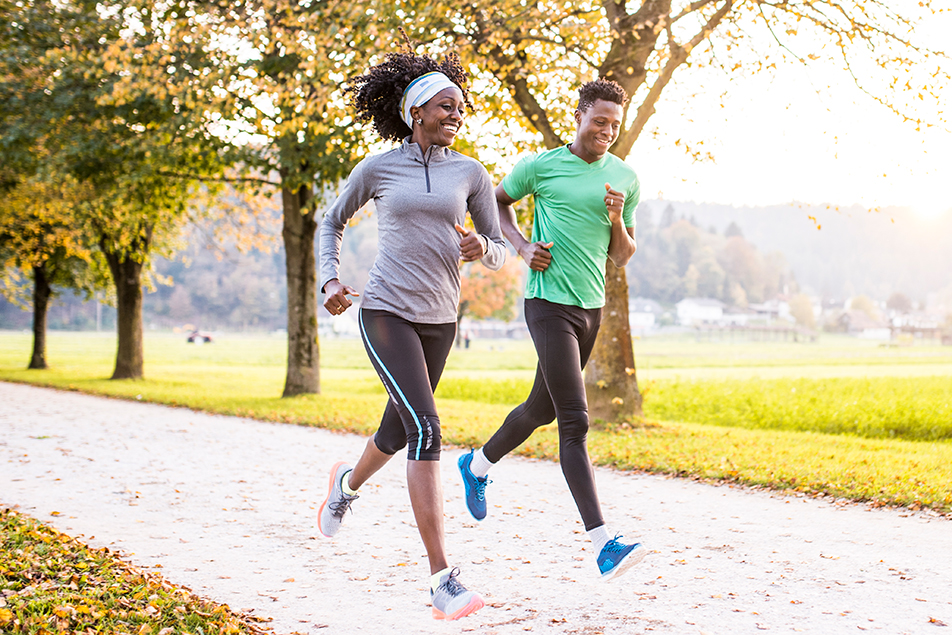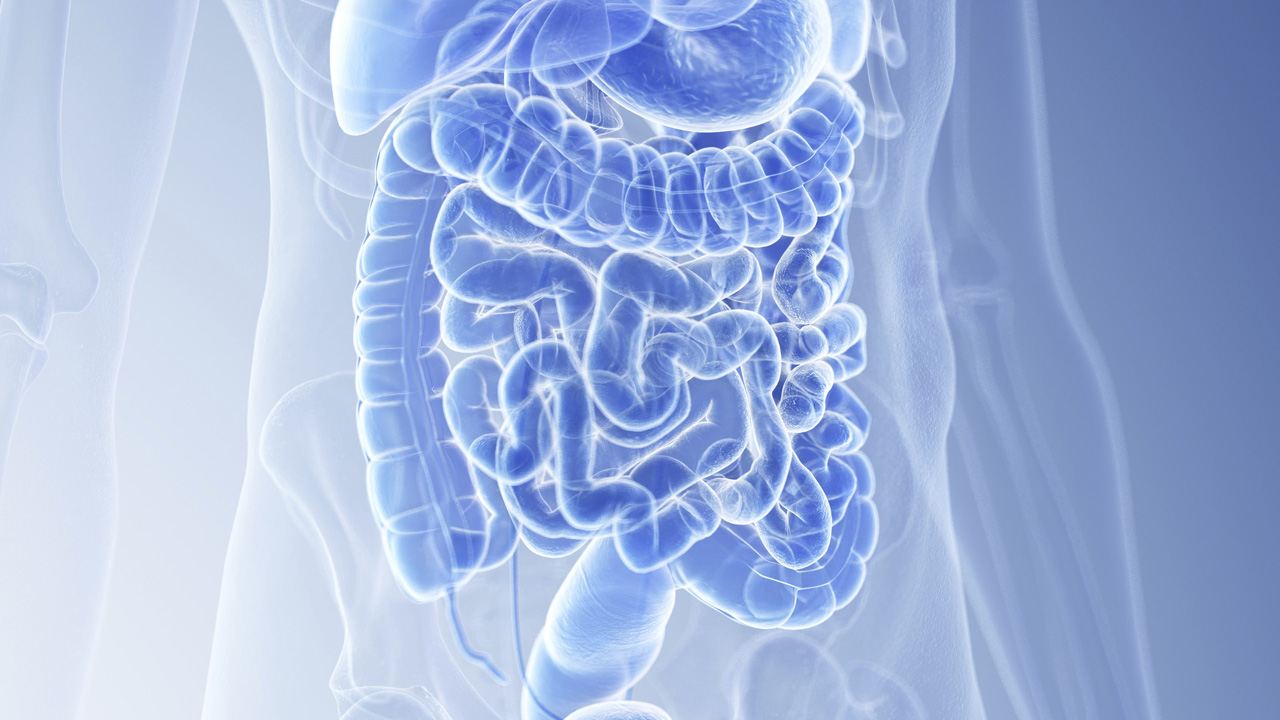Exercise and Digestion
How exercise can help—or hurt—your digestion
Your workout can have profound impacts on digestion. In rare instances, these effects can be dangerous but experts say a few tweaks can help most of us perform and feel better.

Ricardo Da Costa’s first job out of high school in the 1990s in Portugal was as a professional triathlete—competing in races that required him to swim, then bike, then run. One of the biggest problems he and his fellow athletes shared was gastrointestinal issues, but no one was doing anything about it.
Some athletes experienced nausea and stomach pain so severe they couldn’t drink water or take in nutrients during races, forcing them to drop out. While light or moderate exercise can enhance our digestion, our stomachs and intestines aren’t designed for high-intensity workouts. That means that athletes don’t just need to train their muscles; they also need to train their guts to process the water and food they need to stay hydrated and fueled during a long race.
“They thought, ‘Oh it’s just part of the sport,’” says Costa. But that answer didn’t satisfy him. To figure out the root of the problem, he decided to pursue an academic career and now, as an associate professor at Monash University in Australia, he explores how food and nutrition influence performance in sports.
Costa studies how exercise interferes with digestion, and how athletes can calm their guts and compete to the best of their ability. He’s become a sought-after expert with amateur and professional athletes from around the world visiting his laboratory for assessment and treatment.
He’s learned a lot over the past 15 years. Even if you’re not a professional endurance athlete, exercise can have profound impacts on digestion, which depend on the timing and intensity of your workout. In rare instances, these effects can be dangerous, but for most of us, a few tweaks to our routines can help.
How digestion works
Digestion begins before you even open your mouth, explains Arafa Djalal, a gastroenterologist at the Icahn School of Medicine at Mount Sinai in New York.
Just thinking about food signals the brain to fill your mouth with saliva and digestive enzymes. When food enters the mouth, those enzymes—together with chewing—break it down so you can swallow it. It travels through the esophagus into the stomach. For the next two to five hours the stomach relaxes and contracts while releasing digestive enzymes that break down the food until it slides down into the small intestine, then the large intestine and finally, one to three days after eating, the undigestible remnants are excreted.
When the food enters your intestines, your body can sense it pushing on the walls, which stimulates the secretion of more digestive enzymes and peristalsis—the wave-like contractions that gradually move food through the intestines. The process requires energy, blood flow, and communication between cells.
Moderate exercise
If you go for a walk or do a low intensity workout while your digestive system is working, the exercise may help move things along. Contracting your abdominal muscles, for example, can help stimulate peristalsis in your intestines.
"Your biceps or your triceps, that's skeletal muscle, and that's on a voluntary control, which means that you can flex your bicep or you can contract your hamstring voluntarily,” says Robynn Chutkan, a gastroenterologist in Washington DC and author of four books on gut health. “While the GI tract [gastrointestinal tract] is smooth muscle. It's under involuntary control.” But physical activity can still speed up the process by getting your blood flowing and helping to contract and relax these smooth muscles that serve as the passageway of the digestive system.
Over the long term, exercise helps maintain a healthy gut, allowing you to better absorb nutrients, says Florence-Damilola Odufalu, a gastroenterologist at the University of Southern California’s Keck School of Medicine. Physical activity increases our production of a chemical called nitric oxide, which helps relax the muscles in our intestines and prevents inflammation.
Working out also is well-known to promote mental health. Your intestines are lined with nerve cells that communicate with your brain and respond to stress via neurotransmitters. Many researchers now consider irritable bowel syndrome (IBS) a disorder of the gut-brain interaction that is frequently triggered or exacerbated by stress, anxiety, or depression.
While people with digestive disorders may not be able to exercise comfortably during flare ups, when they can get physical activity in, it’s likely to be beneficial. It can reduce symptoms of depression and anxiety that trigger digestive flares.

“It should really be emphasized that there are a lot of beneficial effects on the body, the bones, mental health,” of exercise, says Djalal, all of which can improve outcomes in digestive disorders such as IBS and inflammatory bowel disease (IBD).
High intensity exercise
While light or moderate exercise is almost always helpful for digestion, intense exercise requires some caution.
“There's an increase of blood flow all along the GI tract to allow the digestion to happen,” explains Djalal, and “when you exercise, the demand is elsewhere. It's in your muscles, it's in your lungs and it's in your heart.” Essentially, your digestive system, your muscles and respiratory system start competing for blood flow.
When you’re exercising at a lower intensity, all the systems can share your blood flow and function effectively at the same time, but as the workout becomes more intense, your muscles, lungs and heart require more and more blood, leaving little for your digestive system. This makes it difficult for your body to digest anything during your workout.
When you’re exercising at a high intensity, your body is processing the oxygen from your heavy breaths to create energy, or ATP. In doing so, it also creates metabolic byproducts such as lactate and hydrogen ions. During light exercise, your body can easily clear these byproducts before they cause any problems, but as you start pushing yourself harder, eventually your body can’t keep up. Your digestive system might try to get rid of these byproducts by making you vomit. Costa explains that’s why you might see someone throw up even after a very short, but very intense, sprint race or you might feel nauseous after a particularly challenging workout.
Heat, dehydration, and bacteria
Heat can exacerbate digestive problems brought on by exercise. As your core temperature rises, blood flows away from your internal organs and out toward your skin to help cool you down.
Plus, any hard workout will make you sweat. If you’re unable to replenish the fluid and electrolytes you’re losing quickly enough, you’ll end up under-hydrated. This thickens your blood, slowing its movement and worsening digestive symptoms, explains Costa.
Costa also has found that exercise can damage the lining of your intestines. Usually, if the exercise is not overly intense for the individual, it’s not a serious problem.
“It’s similar to your muscles. You do exercise. The muscles get microtears. After 24 to 48 hours you recover,” he says. If you exercise so intensely that there’s too much damage for your intestines to repair quickly, you can start to have more serious problems such as gut bacteria escaping into your bloodstream.
The immune system can handle a few rogue bacteria in the blood stream that escape during exercise. But, if you have a weak immune system or you work out at higher intensity than your body is accustomed to for hours (as you might when competing in an ultra-distance triathlon, for example), the bacterial leakage could make you extremely sick or even kill you.
What you can do
Most people know it’s usually a bad idea to eat a large meal immediately before exercising, but contrary to what you might expect, Costa and Djalal say that for most people, the easiest solution is making sure you eat something small 30-60 minutes before your workout, such as a banana, a piece of toast, or a carbohydrate drink.
Carbohydrates and sugars are ideal, explains Djalal because they’re rapidly absorbed as fuel. As those nutrients move through your system, they’ll send signals to your stomach and intestines that they need to keep working and recruiting a bit of blood flow.
For endurance athletes, it’s important not only to eat and drink before exercise, but during it as well.
Costa once worked with a professional triathlete from Spain. He’d been racing shorter triathlons for years, but when he decided to take on the classic Ironman Distance (a 2.4-mile swim, 112-mile bike, 26-mile run), his digestive distress got so bad throughout the race that he could no longer keep any water in his stomach. He’d have to drop out of the race due to dehydration.
He flew to Australia to work with Costa, who found that the athlete was losing far more fluid through his sweat than his stomach could handle taking in while he was racing. Whenever he got close to drinking enough liquid, he’d full feel and regurgitate some. Over the next three months, Costa guided him to gradually increase the amount of fluids and fuel he took in while training. He wasn’t just training his muscles, but his digestive system.
At the end of those three months, he completed in an ironman triathlon. Another three months after that, he competed again. He not only finished but placed third in his race.
Source
https://www.nationalgeographic.com/premium/article/exercise-digestion
https://www.niddk.nih.gov/health-information/digestive-diseases/digestive-system-how-it-works
https://www.ncbi.nlm.nih.gov/books/NBK544242/
https://www.mayoclinic.org/healthy-lifestyle/fitness/in-depth/exercise/art-20048389
https://www.webmd.com/fitness-exercise/ss/slideshow-7-most-effective-exercises
https://www.healthline.com/health/gut-health
https://www.betterhealth.vic.gov.au/health/healthyliving/gut-health
https://www.betterhealth.vic.gov.au/health/conditionsandtreatments/immune-system#:~:text=The%20immune%20system%20is%20a,it%20enters%20the%20body%20again.









































